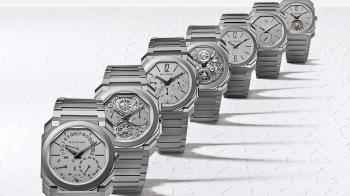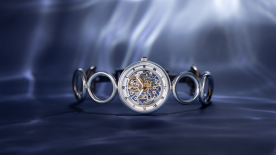Once upon a time, records were a big deal in the watch industry. Thinnest movement. Fastest tourbillon. Loudest minute repeater. Lightest watch. Most complications. I said “once upon a time” — but it wasn’t really all that long ago. Some people would argue that watchmaking records are still a big deal today.
In a sense, they are. Watch companies continue to pursue these goals, indicating that horological records are important to them on some fundamental level. Key among the brands prominent in the field of setting and/or breaking such records recently is Bulgari, and some of the work they’ve done in their Octo Finissimo collection is genuinely groundbreaking.
However, all this stuff about records is particularly interesting in Bulgari’s situation, and I would argue that they’re an exceptional example. For far too long, people didn’t take Bulgari seriously as a watchmaking brand. They thought that Bulgari made jewellery; they thought Bulgari made popular, design-oriented watches; they did not think that Bulgari could do fine mechanical watchmaking. Never mind that Bulgari had serious in-house haute horlogerie expertise since 2000 — far longer than some young independent brands with unequivocal (and undisputed) technical prowess.

There was a prevailing fallacy, which even some respected industry experts subscribed to, that because Bulgari had acquired this expertise via the purchase of the Daniel Roth and Gerald Genta brands, their savoir-faire was somehow less legitimate. Needless to say, this was a complete failure of logic-based reasoning. Nevertheless, the consecutive achievements of Bulgari in the area of ultra-thin watchmaking — particularly ultra-thin complications — succeeded in getting them that reputation for truly outstanding mechanical watches (a reputation they should have had long ago, in my view).
Here’s the thing, though. What do such records and accomplishments actually bring to the consumer? Quite a lot, to be fair. Apart from the sheer joy and satisfaction generated by such creative endeavours, apart from the pleasure that we experience as witnesses to mechanical greatness, there are practical advantages to horological record-setting. Such extreme assays in the realm of watchmaking savoir-faire usually come hand-in-hand with lots of research and development.
Most of the time, this research and development is aimed at improving watch performance, because most of the watchmaking records we see (thinnest movement, most complications, lightest watch etc) have the unfortunate side effect of compromising the timepiece in question. Thin watches are not usually robust watches. Light watches are not usually stable watches. Multi-complication watches are not usually wearable watches. The knowledge gained is therefore usually in the form of how to make watches that are more robust, more stable and more wearable. When this knowledge is applied down the line to regular production pieces, that means better watches for everyone.
That said, I fundamentally dislike focusing on the pure fact of the record itself, because it can be very decontextualising. Records are an easy way to impress upon people with less product awareness that a watch is impressive and important, but it needs to be followed up with an explanation of why thinness or lightness (or whatever the record is) matters in a watch. Otherwise it just perpetuates the idea that mechanical watchmaking is an out-of-touch industry that obsesses over stuff that no one else cares about.
Records can be important, but what’s even more important is the work that goes into helping people understand them.





